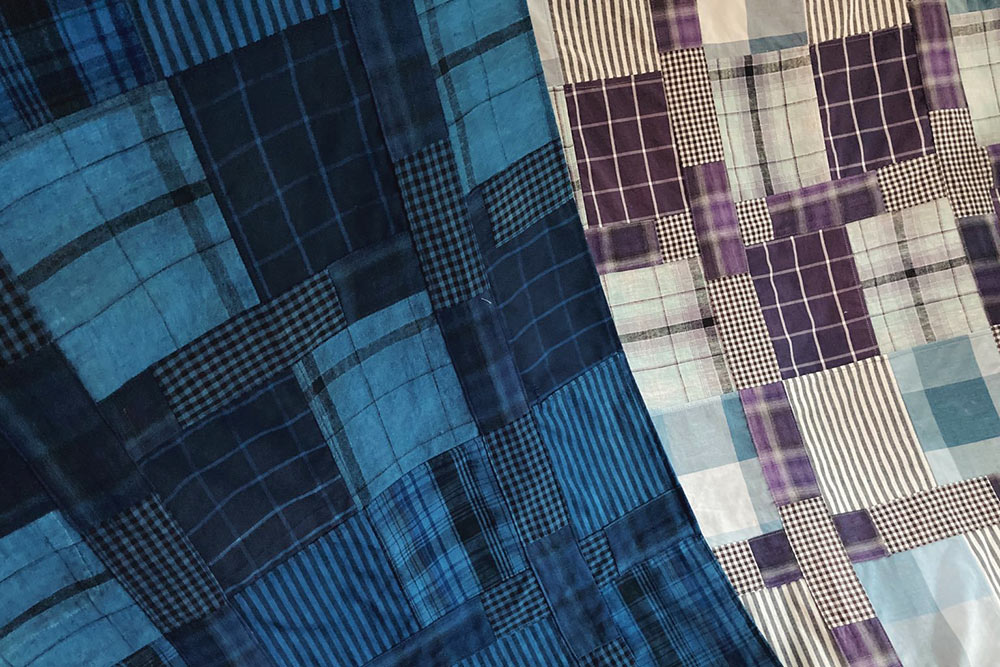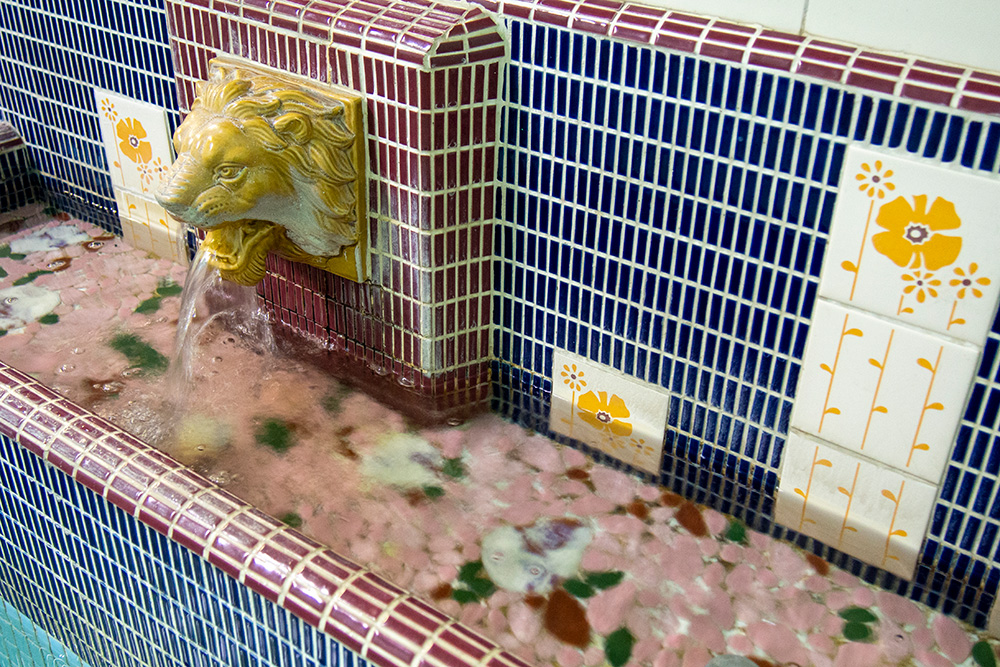-
Giving It All You’ve Got
The below text is part of a talk given at The Australian Design Centre on April 17 2021 to coincide with exhibition of the work Gingham All You’ve Got. Gingham All You’ve Got is a textile piece that re-imagines the humble checked work shirt as a textile asset of multiple uses. Decommissioned cotton business shirts…
-
Local Sentō, a Surviving Tradition
Original essay published in the catalogue for Steam Dreams: The Japanese Public Bath. By Eloise Rapp and Simonne Goran Our visit to the local bathhouse begins in a residential neighbourhood of a Japanese city. It is a winter’s evening and you’re surrounded by the gentle buzz of commuters making their way home. As you weave…
-
Weaving Pang Jai: In Search of Old Hong Kong
The Yen Chow Street Hawker Bazaar is the oldest operating outdoor fabric market in Hong Kong. Occupying an entire block in Kowloon’s bustling Sham Shui Po district, the bazaar is one of the last of Hong Kong’s uniquely makeshift environments. A chaotic labyrinth of fabric bolts piled ceiling-high and somehow fashioned into stalls, where every…
-
Pathways Through The Social Outfit.
This essay was originally published in Garland Magazine’s 14th issue, titled Harbour, on March 5. Read the article here. Colour Chameleon was the title of The Social Outfit’s first collaborative fashion collection. At their launch party in 2014, I remember watching on from the audience as one-by-one the richly eclectic, bold and joyful garments graced…
-
Intuitive Thread: The Beauty of Process in Japanese Textiles
This essay was originally published in Garland Magazine’s 13th issue, titled 生きている工芸 / Ikiteiru Kougei (Living Craft), on December 2. Read the article here. In February last year, I moved to Kyoto. I wasn’t sure exactly how long I’d be here, but I intended to spend as much time as I could immersing myself in…
-
Ohara Koubou and Kusakizome Methodology.
I’ve been exploring the Japanese plant dye process kusakizome (草木染め) over the last few months, challenging myself with loosening a lot of the dyeing methodology I’ve become familiar with over the years and embracing the sometimes complex Japanese method. The abundance of available natural dyestuffs in Japan is staggering, and the different process used to extract colour…
-
Reductive Textiles
We’ve been lucky to call Kyoto home for almost a year now. Looking around our little wooden house, large in comparison to anything we could afford in Sydney and filled with scattered cosy mess, it feels like we’ve properly settled in. Whilst the first half of this year was spent relaying between immigration bureaus and real estate offices,…
-
Heritage textiles and shaping a sustainable cloth future.
As a former professor at Kyoto City University of Arts, Nobuko Hiroi’s personal collection of world textiles spans decades of travel and research devoted to handcrafted materials and the tools that made them. It’s wonderful when collections like these are open to the public, as this one was earlier in the year as part of her…
-
Aqueous Appreciation: Thoughts on the Japanese Bath
The closest I’ve come to meditation has been whilst bathing. At least it was a feeling I guessed was meditative, something I can’t yet say I’m familiar with despite my various and feeble attempts at meditation over the years. Sitting in a well worn cypress tub at Funaoka Onsen, Kyoto’s most famous bath house and…
-
Karigane: The Art Of Sensitive Renovation
Last week I had the pleasure of meeting Rika and Shimo, the owners of a beautiful and thoughtfully converted machiya guest house called Karigane. The neighbourhood which I also call home, Murasakino, has been revealing its character to me in great swathes. Much of the beauty of this historic district, dotted with myriad temples, food producers and bathhouses, lies…
-
Hiroshi Saito: The Freestyle Dyeing Process
Hiroshi Saito is a textile artist living and working in Kyoto. I was fortunate to meet him when he opened his studio to the public last week and we happened to walk past on our way home. He has been working with textiles for over forty years, specialising early on in his career with technical…
-
UTS Master of Design: Print & Place
A couple of months ago I wrapped up a new elective subject that I developed for the Master of Design at the University of Technology, Sydney (UTS). Print: Researching Contexts was the first dedicated screen printing subject to be offered for postgraduate students as a summer intensive, and it was a great opportunity to give…
-
The Social Outfit: Cultivating Community, Fashioning Change
It’s been a big two years for The Social Outfit since they launched in June 2014. As a registered charity, their mission is to employ and train people from refugee and new migrant communities. They provide educational & training programs in clothing production, retail, design and marketing. By working from the cultural strengths of their…













